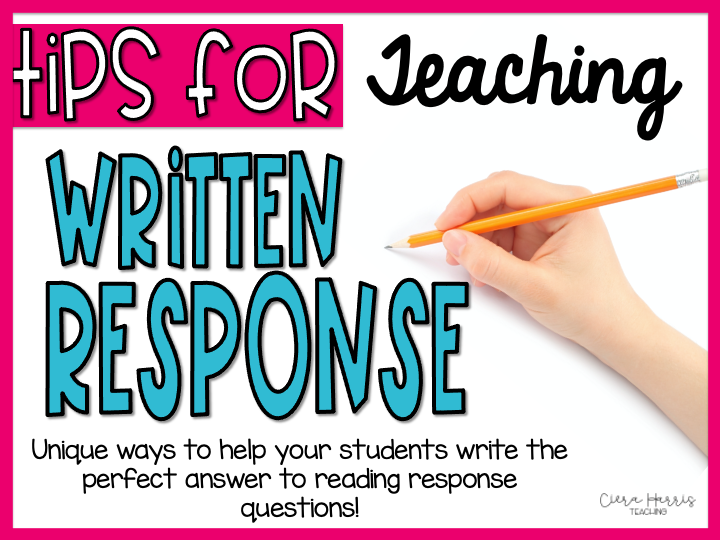If I had a nickel for every time I heard this complaint from a teacher, I would be able to quit my day job! ‘How do I get my students to write more’!? It’s a struggle that all teachers face so don’t worry, you’re not alone. Writing is an art. And just like drawing, dancing, and singing, it may not come naturally to many students. But there are ways to encourage, motivate, and inspire our students to become the best writers they can be. Today, let’s chat about how to get students to write more!
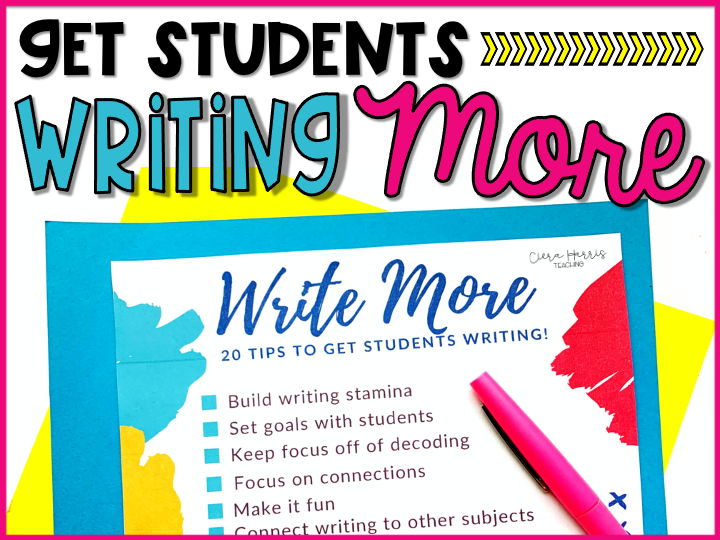
Want to watch the video instead? Check it out below! Make sure to subscribe to get updates on all new content!
Build writing stamina
From day one, work on building up their stamina! Reluctant writers lack stamina and so writing should become a priority. Make time for writing every day. Simple activities such as freewriting journaling where they can write whatever they want are very effective! You can also try a prompt jar or even daily quick writes at the beginning or end of each day.
Set goals with students
Talk to students about their writing so you can set goals. Without goals, what focus are you giving them? What carrot are you dangling in front of their noses that they can try to complete? Writing goals don’t have to be elaborate. It can be as simple as writing a goal on the corner of their paper or on a post-it note. This simple goal helps them focus & keeps them motivated. Make sure to give specific black & white goals. For example – write 7 more adjectives. You can give goals to the whole class or even personalize goals so they are more meaningful.
Keep the focus off decoding
So many students get stuck on decoding words when writing when the focus needs to be on getting their ideas down on paper. Easy activities such as a You try/I Try anchor chart can help students move past the worry of decoding and keep focused on their writing. You can also try personalized word lists. Writing isn’t about getting everything right in terms of spelling. The more pressure they feel to get it right the first time, the less they are focused on the writing process, ideas & expression. We are more interested in what you have to say than how it looks.
One way I like to teach this is by giving two different pieces of paper where you read both stories but don’t show them to the students. Then ask how do they sound and which one is better & why? Show how they look. The most expressive writing would have misspellings, incorrect grammar, etc. The most important things the writers can give are their ideas and expressions. We will get the conventions down with practice & repetition but writers should know the most important thing they can give is their thoughts, opinions, and ideas on paper.
All about connections
Students need to be able to connect with what they are writing about. They need to connect to the content and to the audience. They will be more motivated to write if they can connect to the topics. Giving choices is a fantastic way to allow these connections to take place. Does it really matter what topic they choose? Allow them to be invested in the topic. Keep their interests in mind. Also, reflect on your assignments to determine why students may be reluctant writers.
Make it fun
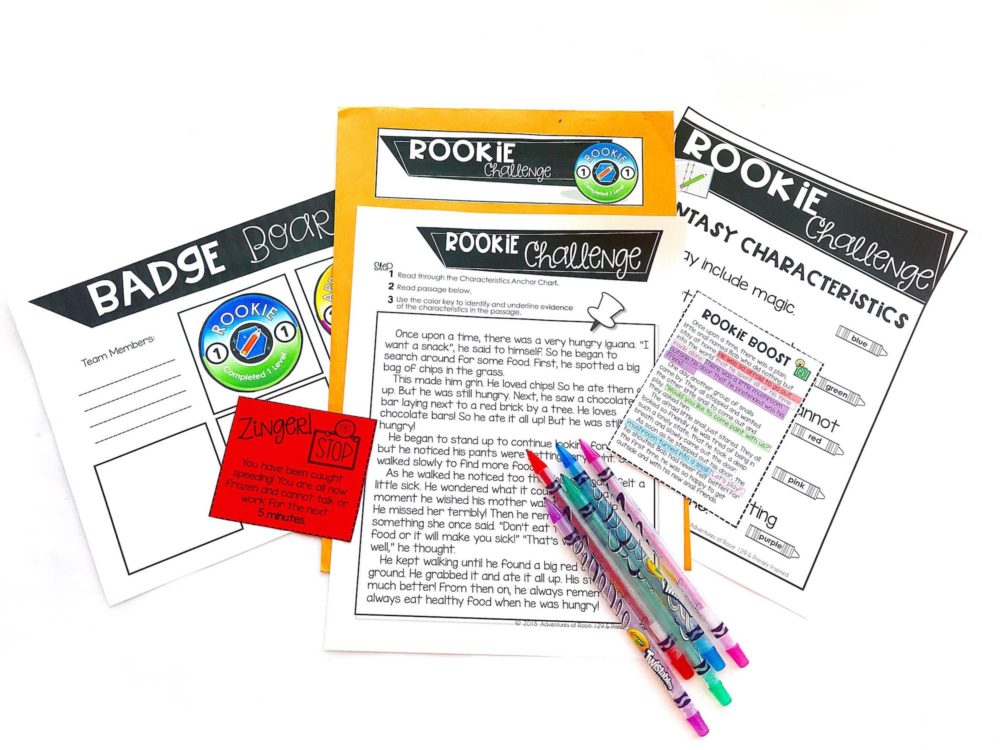 Engagement in writing is all about being intentional. Can I make it a priority to making writing fun? Activities like critique movies (short Pixar films?/food (tastings?), interviews, sticky note stories work great for motivating writers. You can also write out lots of characters, settings, plot twists, etc. and color code or sort them. Students can collect one of each and write a story about that topic. Play games like would you rather, conduct Escape Rooms or Level up writing challenges.
Engagement in writing is all about being intentional. Can I make it a priority to making writing fun? Activities like critique movies (short Pixar films?/food (tastings?), interviews, sticky note stories work great for motivating writers. You can also write out lots of characters, settings, plot twists, etc. and color code or sort them. Students can collect one of each and write a story about that topic. Play games like would you rather, conduct Escape Rooms or Level up writing challenges.
Connect writing to other subject areas
Teachers tend to put writing in a box. Writing can be incorporated into other subject areas – just be clear that you are writing. Be intentional about merging writing in areas like math, reading, and science. If you’re working on persuasive, have students write a persuasive paragraph about one math strategy over another. If you’re working on how to writing, have students write a how-to piece for a specific science topic. There are tons of possibilities!
Use sentence frames/stems
This strategy is big for reluctant writers. I encourage you to make this a norm every time you write. Maybe they have no ideas for how to start or too many ideas about how to start. Giving students basic sentence frames or stems can help kickstart the brainstorm and writing process for them, allowing them to begin when without them, they would simply stare at the blank piece of paper.
Draw a line goal
This is a strategy for your extremely reluctant writers who are very black and white and who want to know when they can stop writing. We need to honor that. Writing is an anxiety for students and if they can see the end goal, they are more willing to work hard to reach it. There comes a breaking point when writing becomes too much. In extreme circumstances, draw a line on their paper to give students a stopping point. Avoid telling them how many sentences to write and instead simply focus on the line goal. This will allow them to write as they please and be able to see when they can stop if they choose.
Use voice technology
Another great strategy for reluctant writers. Some teachers think that by using voice to text tools that students are cheating, but it isn’t cheating! Students are reluctant because they don’t know what to think or say. This technology can get your students past this obstacle. This technology gives you evidence that they can write paragraphs or stories. You can print it and show them what they have “written”. Let reluctant writers talk.
Want to snag this comprehensive list of all 20 ideas in one easy to print page? Just click HERE and it’s all yours!
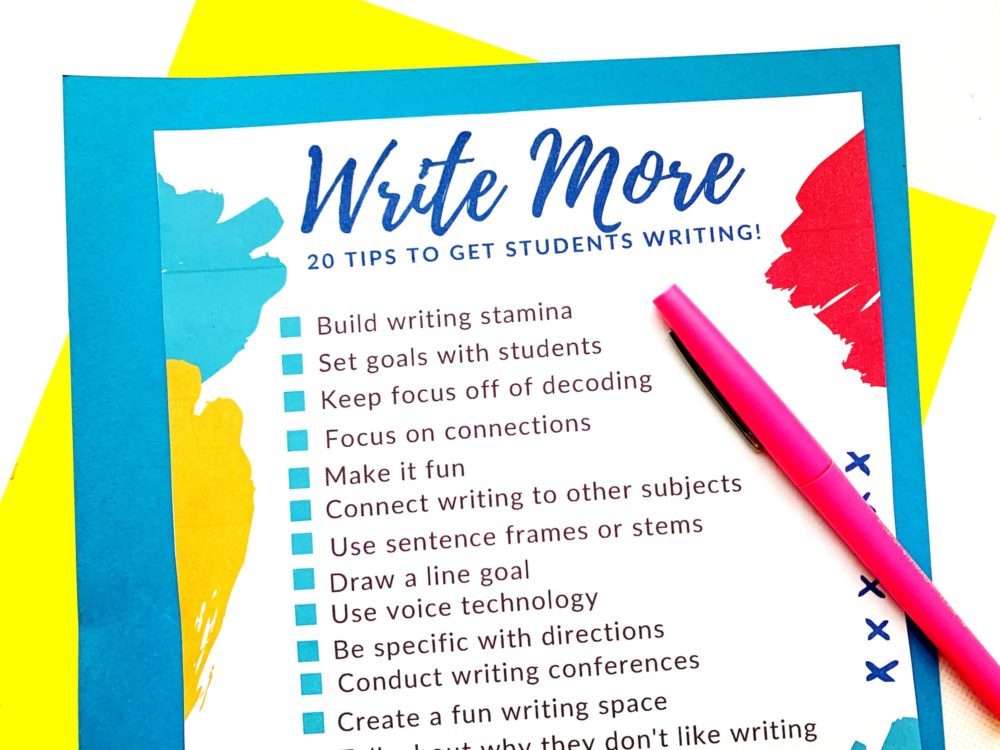
Be specific with directions
“Go back and add more detail” is too vague. From the get-go, be more specific and you will see more specific progress from your writers. Try “focus on adding 5 adjectives to your writing” or “make sure you have one of each of the 4 types of sentences in your writing. You can merge grammar and writing. The more specific you are, the more your reluctant writers can understand and can do.
Conduct writing conferences
Teachers who feel they don’t have time need to lessen their talk time and let the students write more. Conferences can be simple! Make a box for each student for each week and make a point to meet with each student and fill that page by the end of the week. Identify success or a goal (#2) they need to meet and give specific feedback. This also allows you to document student growth over time.
Create a fun writing space
The favorite part of my classroom was my writing area. It had a binder full of pretty stationery or paper with cute borders, stickers, writing anchor charts, dictionaries. A one-stop-shop for writing support. This encouraged students to visit the writing center because it is fun and students wanted to publish their writing with the cool tools I had set out 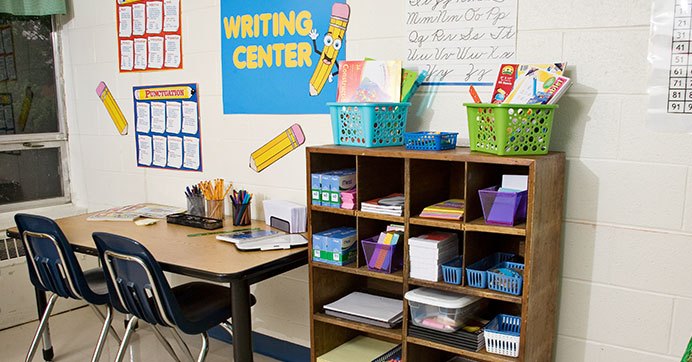 for them. You can encourage them to become published authors with this fun writing space.
for them. You can encourage them to become published authors with this fun writing space.
Talk about why they don’t like writing
Many teachers do not like teaching writing because they themselves don’t feel they are adequate writers. Therefore you can empathize with students’ feelings. Share your writing journey as an adult with your kids. They will see that you, too, at one point felt you were not a strong writer. Show them that writing is a journey and that we all have our own paths and take our own time to grow. You have to talk to your writers so you can learn about them.
Brainstorm time
Because of time, we often skip this or don’t dedicate ample time to brainstorming. Teach them that there are a variety of ways to brainstorm or talk about your writing with peers. Let them draw. Give them a blank sheet of paper to draw what you want to write about. Random images, sequenced images, etc. Drawing is a powerful tool for reluctant readers and writers. Ideas don’t come in a split second so validate the process of brainstorming.
Student choice
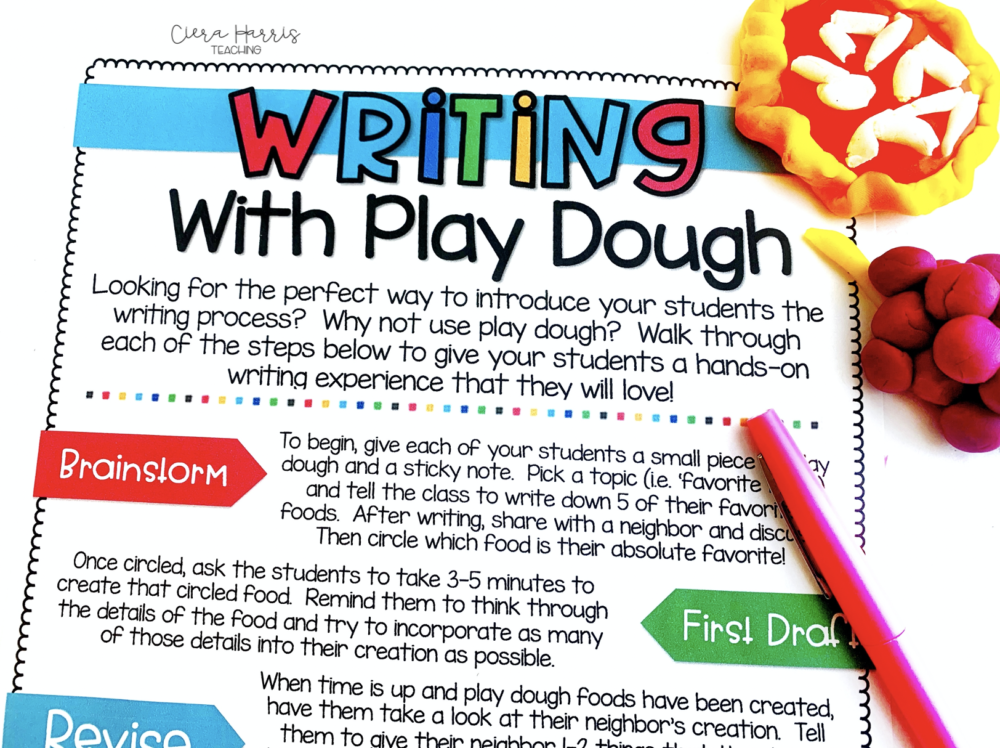 If they aren’t connected with a topic, they won’t want to write about it. Give them choices in everything. Does it matter which topic within a genre they write about? If you’re focused on persuasive writing, there are tons of options students can pick from to write about. Let them choose what’s meaningful and important to them and you’ll see their writing blossom!
If they aren’t connected with a topic, they won’t want to write about it. Give them choices in everything. Does it matter which topic within a genre they write about? If you’re focused on persuasive writing, there are tons of options students can pick from to write about. Let them choose what’s meaningful and important to them and you’ll see their writing blossom!
I love introducing the writing process with this fun playdough lesson!
Self Selecting scaffolding (Graphic organizers)
Say this 5x fast. ? Give students choices on how they support themselves. We teach them how to organize, brainstorm, and use tools when writing, but then we force our students to use a certain way of doing things. Maybe you are forcing your students to use the web to brainstorm. But instead, what we can do is teach them how to use a type of organizer, but then give them the choice later on in the school year. I love to keep all of the different organizer options in the writing center so students have easy access to them!
Allow students to write in the language they feel most comfortable with
This tip is obviously for students who speak more than one language. This allows students to make progress in their writing and also allows them to get their ideas on paper. Encourage the students to include English when possible. Remember, the focus is on getting the ideas down onto paper. Perhaps an ELL teacher at your school could support by translating for you. Then you can work with the students on fixing what they need to meet the writing objectives.
Ideas over grammar
Ideas are way more important than grammar. Students need to feel safe when exposing themselves as writers. Model making mistakes and leaving them. Focus your intentions on the ideas over the visual of the paper. You can also find videos about famous authors talking about their writing process to show that ideas are where the focus should be!
Follow the students’ lead
Each writer and each reader is an individual with their own strengths/weaknesses. Don’t push your agenda onto your student’s writing. Meet the writer where they are and follow their lead. You can have an objective you’re working on with the class but then when meeting with each individual student, focus on what they are providing you and where their next logical step would be.
Celebrations
Writing and expressing is hard. Learning how to craft writing is hard. Validate every step they took. Prioritize time to celebrate! Have a daily author’s chair where you end with a volunteer reading out loud their piece to the class. Host a monthly author’s night where you invite families into the classroom to hear and read everyone’s hard work. Celebrate every goal met and every completed piece!
Want to save this post for later? Make sure to pin the image below!



